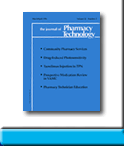 |
 |
MYDRIASIS, HYPERTENSION,
AND TACHYCARDIA POSSIBLY ASSOCIATED WITH VENLAFAXINE AUGMENTATION OF
MIRTAZAPINE
Daniele F Zullino and Gianni
Cucchia
To request full article click here.
OBJECTIVE: To report a case of mydriasis and hypertension resulting from concomitant use of mirtazapine and venlafaxine.
CASE SUMMARY: A 36-year-old man had been treated for 7 weeks with mirtazapine up to 60 mg/day without satisfactory therapeutic effects. Venlafaxine extended-release up to 150 mg/day was added with the aim to boost the antidepressant effect. After 5 days of venlafaxine treatment, the patient developed apparent mydriasis, and after 9 days of therapy, the patient's blood pressure peaked at 200/120 mmHg. While he remained under mirtazapine therapy, both symptoms resolved within 24 hours after venlafaxine discontinuation.
DISCUSSION: A rise in blood pressure is a well-known phenomenon with venlafaxine. As of September 27, 2004, this is the first case of hypertension after venlafaxine augmentation of mirtazapine and the first case to report a preceding mydriasis. We propose an excess of noradrenergic activity due to the combination of venlafaxine and mirtazapine to be the most probable cause.
CONCLUSIONS: Whereas the mirtazapine/venlafaxine combination seems a promising approach in the treatment of refractory depression, this strategy may be associated with adverse drug events not observed with either of the drugs when given alone. Mydriasis may be a good premonitory sign for hypertension.
J Pharm Technol 2004;20:334-5.
To request full article click here.
|
|
|
||
|

